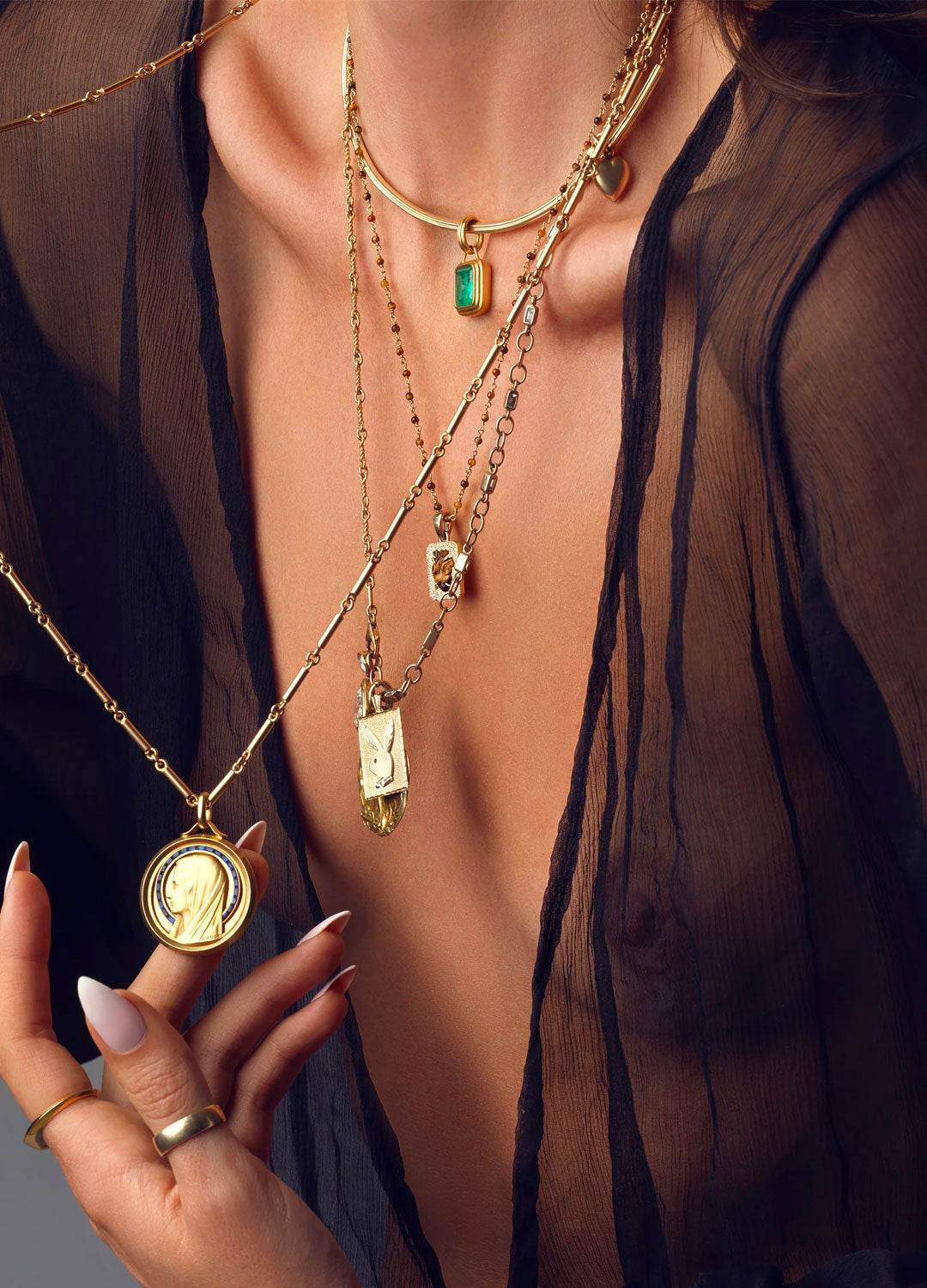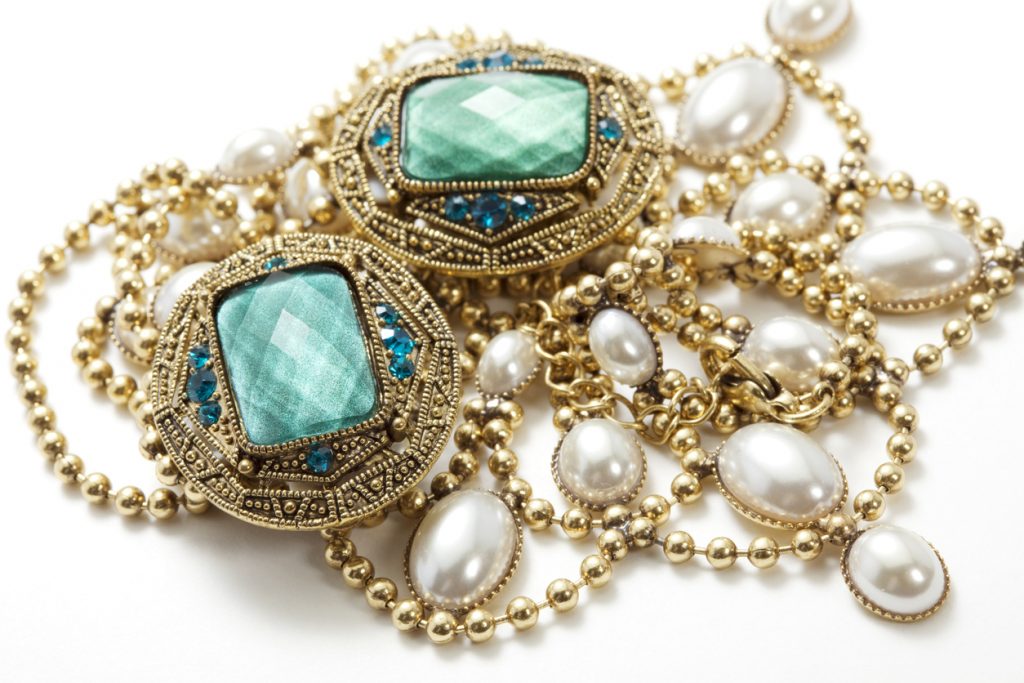Reveal the Allure of Vintage Jewelry and Its Distinct Appeal
The attraction of classic jewelry lies not just in its visual appeal but additionally in the rich background and craftsmanship that each piece symbolizes. From the intricate designs of the Victorian period to the strong declarations of the Art Deco age, vintage precious jewelry welcomes expedition into its special beauty and importance.
Historical Importance of Vintage Precious Jewelry
The historic relevance of vintage precious jewelry expands far past mere adornment; it functions as a tangible link to the cultural and social dynamics of previous ages. Each piece reflects the aesthetics, worths, and technical developments of its time, providing insight into societal standards and specific expression. Victorian precious jewelry commonly embodies the age's romanticism and grieving customs, featuring elaborate layouts and meaning that reveal psychological deepness.
Additionally, classic fashion jewelry can symbolize standing and wide range, as seen in the lush pieces of the Art Deco motion, characterized by geometric shapes and bold colors. These accessories were not just ornamental; they communicated status and elegance. Furthermore, the advancement of materials and techniques, from using all-natural pearls in the 18th century to the introduction of synthetic gems in the 20th century, illustrates the shifting top priorities and advancements within the fashion jewelry market.
As collection agencies and chroniclers check out these artefacts, they discover rich stories that go beyond generations. Vintage precious jewelry hence acts as a social artifact, allowing individuals to engage with history on a personal level, cultivating a much deeper admiration for the craftsmanship and societal impacts of lost periods.
Unique Craftsmanship and Style
Just how does special workmanship elevate vintage fashion jewelry past simple devices? The creativity entailed in the creation of classic fashion jewelry is a testimony to the skill and commitment of the artisans that created and crafted these pieces. Each item reflects a meticulous interest to detail, showcasing techniques that have often been passed down with generations. The use of detailed metalwork, hand-cut gems, and cutting-edge style elements differentiates classic jewelry from modern mass-produced alternatives.
Oftentimes, vintage items include special setups and embellishments that are no longer typically used, such as fretwork, enameling, and using rare materials. These approaches not only enhance visual appeal however likewise imbue each piece with a narrative of craftsmanship that speaks with the age it stands for - vintage jewelry austin tx. The individuality of classic precious jewelry is more accentuated by the imperfections integral in hand-made things, which include character and beauty
Inevitably, the craftsmanship in vintage jewelry changes these products from easy adornments into treasured treasures, each telling its own tale while embodying the imaginative spirit of its time. It is this distinct workmanship that astounds collection agencies and fanatics alike, making classic fashion jewelry a desirable treasure.
Popular Vintage Precious Jewelry Eras
Classic precious jewelry is frequently classified by details ages, each showing the distinct styles, social influences, and technical developments of its time. The Victorian age (1837-1901) is renowned for its charming designs, including elaborate metalwork and gems symbolizing love and loss. Following this, the Edwardian period (1901-1910) showcased sophistication with delicate lacework and diamond-dominated items, often embodying a sense of lightness and refinement.

Mid-century contemporary fashion jewelry (1940s-1960s) emphasized a minimal visual, typically including abstract kinds and space-age impacts. The late 20th century saw the increase of Retro jewelry (1930s-1950s), characterized by large designs and the usage of gold, commonly motivated by Hollywood glamour.
Each of these eras adds to the rich tapestry of classic fashion jewelry, making it not only a testimony to virtuosity yet likewise a representation of social worths and technical progression through the ages. - vintage rings austin
Just How to Look After Vintage Pieces
Although vintage jewelry is typically commemorated for its historic relevance and aesthetic appeal, appropriate care is vital to preserve its appeal and integrity. To preserve these treasured pieces, it is important to understand the materials and craftsmanship involved.
First, store vintage precious jewelry in a trendy, completely dry location, away from direct sunlight and humidity. Use soft pouches or lined boxes to protect against scratches and tangling. Keeping pieces divided will likewise reduce damages from friction.
When cleansing, prevent severe chemicals and ultrasonic cleaners, as they can hurt fragile parts. Instead, utilize a soft, lint-free towel to delicately wipe away dirt and oils. For detailed layouts, a soft-bristled brush can help reach crevices, while a light vintage engagement rings austin soap solution may be made use of when necessary.
Regular examinations are essential; check for loosened stones, weakened holds, or indicators of wear. If repair services are needed, seek advice from a professional jewelry expert experienced in classic items to ensure ideal methods are used.
Last but not least, wear your vintage jewelry with care, preventing exposure to fragrances, lotions, and unpleasant surface areas, thus making sure these ageless treasures can be appreciated for generations ahead.
Collecting Vintage Fashion Jewelry Tips
Building a collection of classic fashion jewelry calls for a keen eye and an understanding of the numerous styles, periods, and products. To start, acquaint yourself with the historical context of different precious jewelry periods, such as Art Deco, Victorian, or Mid-Century, as each has distinctive attributes. This understanding will direct your getting choices and boost your appreciation for each and every item.

Networking with various other collection agencies can likewise provide beneficial insights and chances. Joining vintage precious jewelry forums or attending enthusiast shows can improve your understanding and expand your collection.
Finally, hold your horses and selective; the ideal items often require time to find. Spend in products that reverberate with you personally, as the emotional connection will certainly make your collection genuinely unique and fulfilling. Pleased gathering!
Verdict
In final thought, classic jewelry symbolizes a rich historic relevance, showcasing distinct workmanship and layout that distinguishes it from contemporary items. Its allure is greatly rooted in the cultural stories and aesthetic values of various ages, consisting of the romanticism of the Victorian period and the boldness of Art Deco. Recognizing just how to take care of and collect these treasured items improves their admiration, guaranteeing that the appeal and virtuosity of vintage fashion jewelry continue to resonate via generations.